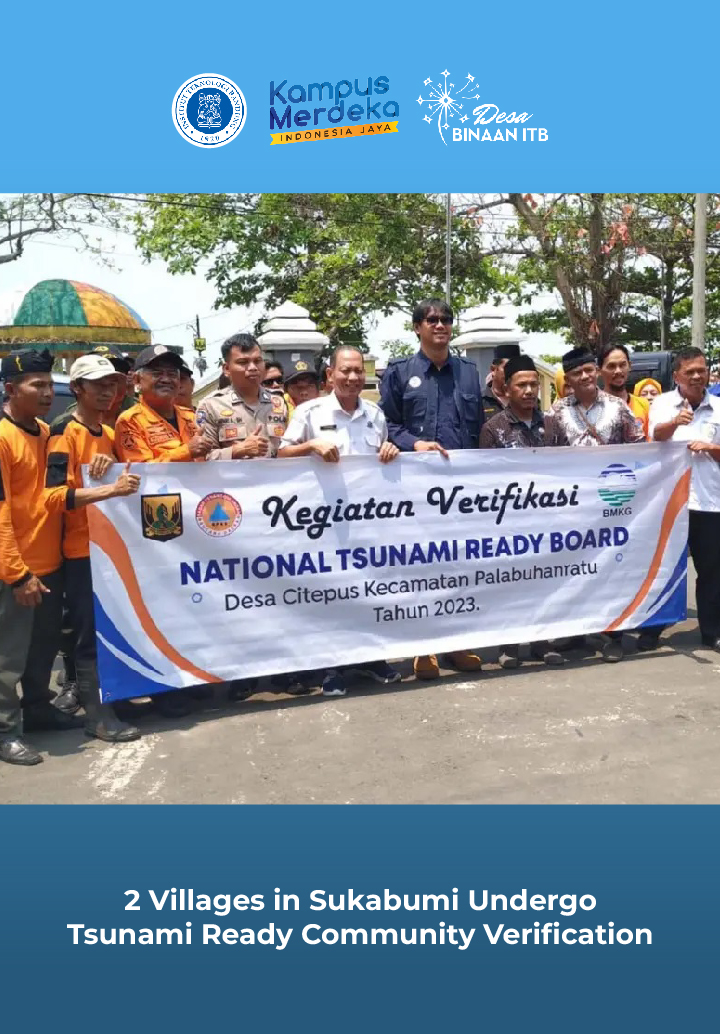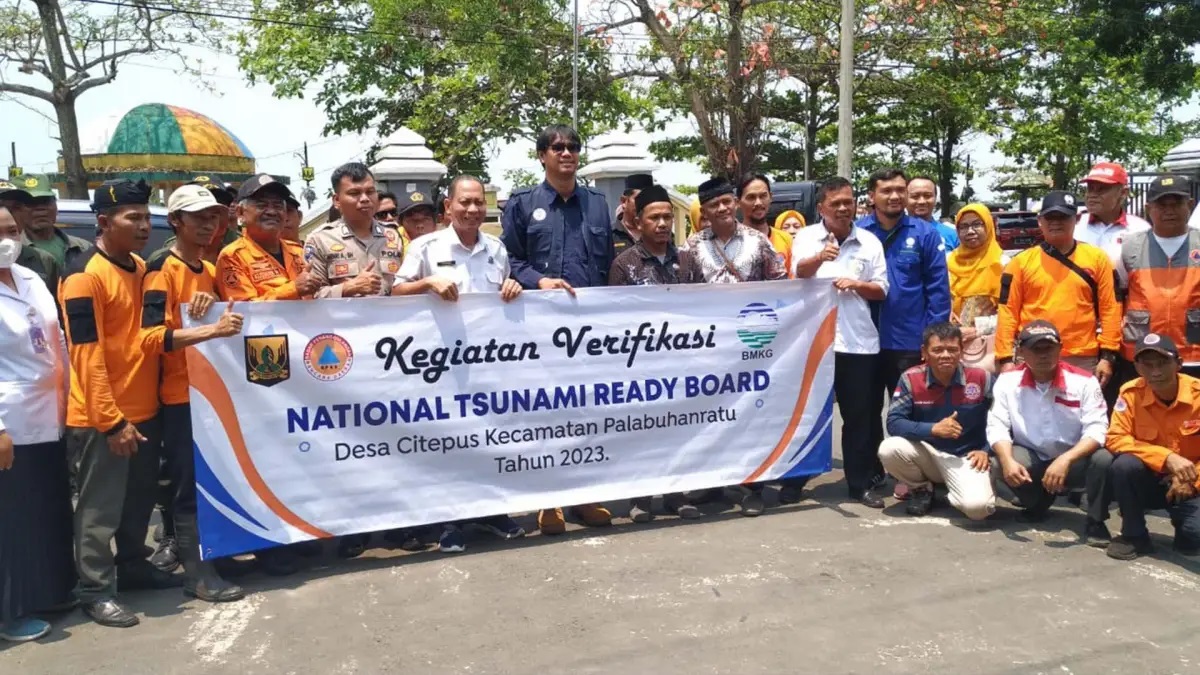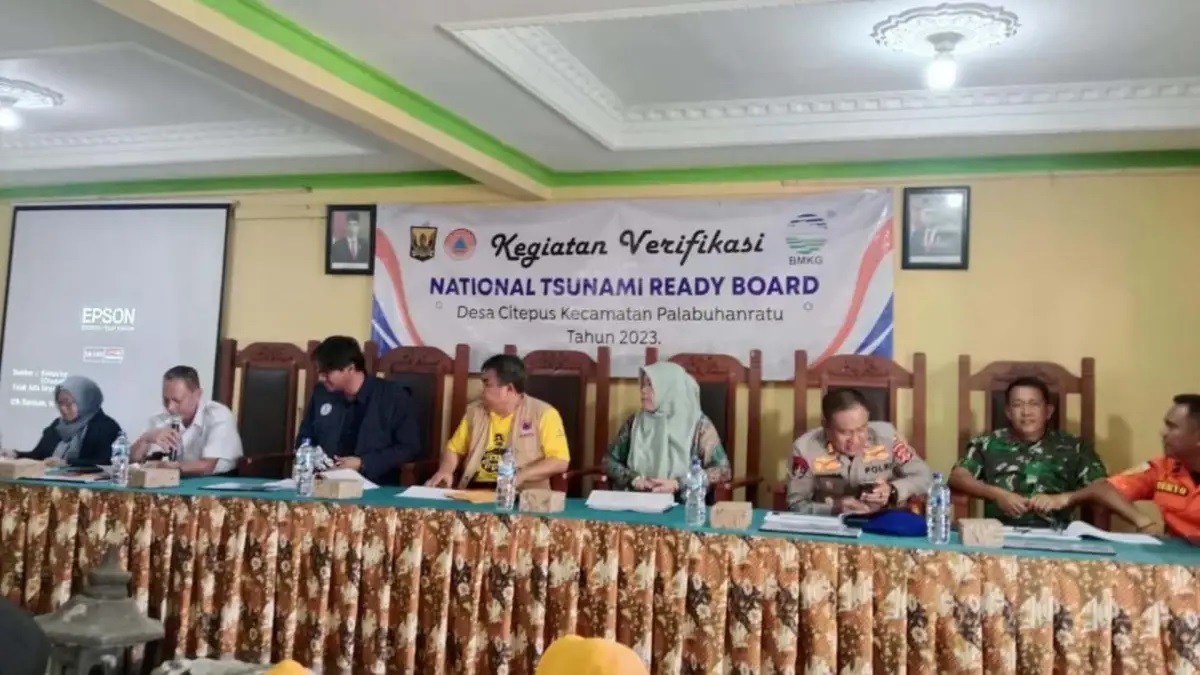

Two villages in Sukabumi Regency, namely Cikakak Village in Cikakak District and Citepus Village in Palabuhanratu District, have entered the national field verification stage to be recognized as Tsunami Ready Communities at the international level.
The Tsunami Ready Community program aims to enhance community capacity in facing tsunami threats based on 12 indicators established by the Intergovernmental Oceanographic Commission of UNESCO (IOC-UNESCO).
The field verification activities were carried out by National Tsunami Ready Board (NTRB) verifier from Bandung Institute of Technology (ITB), Endra Gunawan, and were held at the Citepus Village Office on Friday, October 13, 2023, and at the Cikakak Village Office on Saturday, October 14, 2023.
It is known that in Citepus and Cikakak Villages, there are 12 Tsunami Ready Community indicators that will be recommended and followed up by the verifier to achieve international recognition from IOC-UNESCO.
The Acting Head of BPBD Sukabumi Regency, Jujun Juaeni, who participated in the verification activities, expressed his gratitude for the central government's attention to the disaster potential in Sukabumi Regency. He stated that the verification aimed to check for consistency between the documents and the actual conditions in the field.
"But more importantly, the verification shows that Sukabumi Regency is highly regarded by the central government for tsunami anticipation," said Jujun, who is also the Regent's Expert Staff, to sukabumiupdate.com at the Citepus Village Office on Friday (October 13, 2023).
Jujun hopes that a tsunami will never occur in Sukabumi Regency. However, he emphasized that the community must always be prepared for the worst-case scenario. He also mentioned that consistency is maintained not just for assessments but as a habit to be ready for any eventuality, considering the ongoing risk due to the proximity to the coast.
"I see the community's enthusiasm is extraordinary. And I believe they are consistent not just because of the assessment, but it has become a basic need to always enhance their disaster skills and knowledge," he explained.
He mentioned that Citepus and Cikakak Villages would serve as examples in Sukabumi Regency, with hopes that other coastal areas in Sukabumi Regency will soon follow suit to become Tsunami Ready Communities.
"International recognition of the Tsunami Ready Community in Citepus and Cikakak Villages is of strategic value. This means that the area is considered more prepared to face the threat of a tsunami, which will increase community confidence, attract tourists, and boost regional revenue," he concluded.
It is known that long before this activity, BMKG Region II South Tangerang had also prepared two Tsunami Ready Community indicators in Cikakak and Citepus, namely by preparing the community with Tsunami Ready Schools and handing over Tsunami Hazard Maps and Evacuation Maps to the Regional Government at Grand Inna Samudera Beach Hotel on Thursday, May 11, 2023.
The Head of BMKG Region II South Tangerang, Hartanto, stated that Cikakak and Citepus Villages are potential areas that could be affected in the event of a tsunami. Therefore, they have been working to ensure that the communities in these villages meet the 12 Tsunami Ready Community indicators by 2023.
"So the communities of Cikakak and Citepus Villages can receive international recognition from UNESCO this year. We will support them until it is achieved. The target is indeed this year," he said.
Here are the 12 Tsunami Ready Community indicators by IOC-UNESCO:


